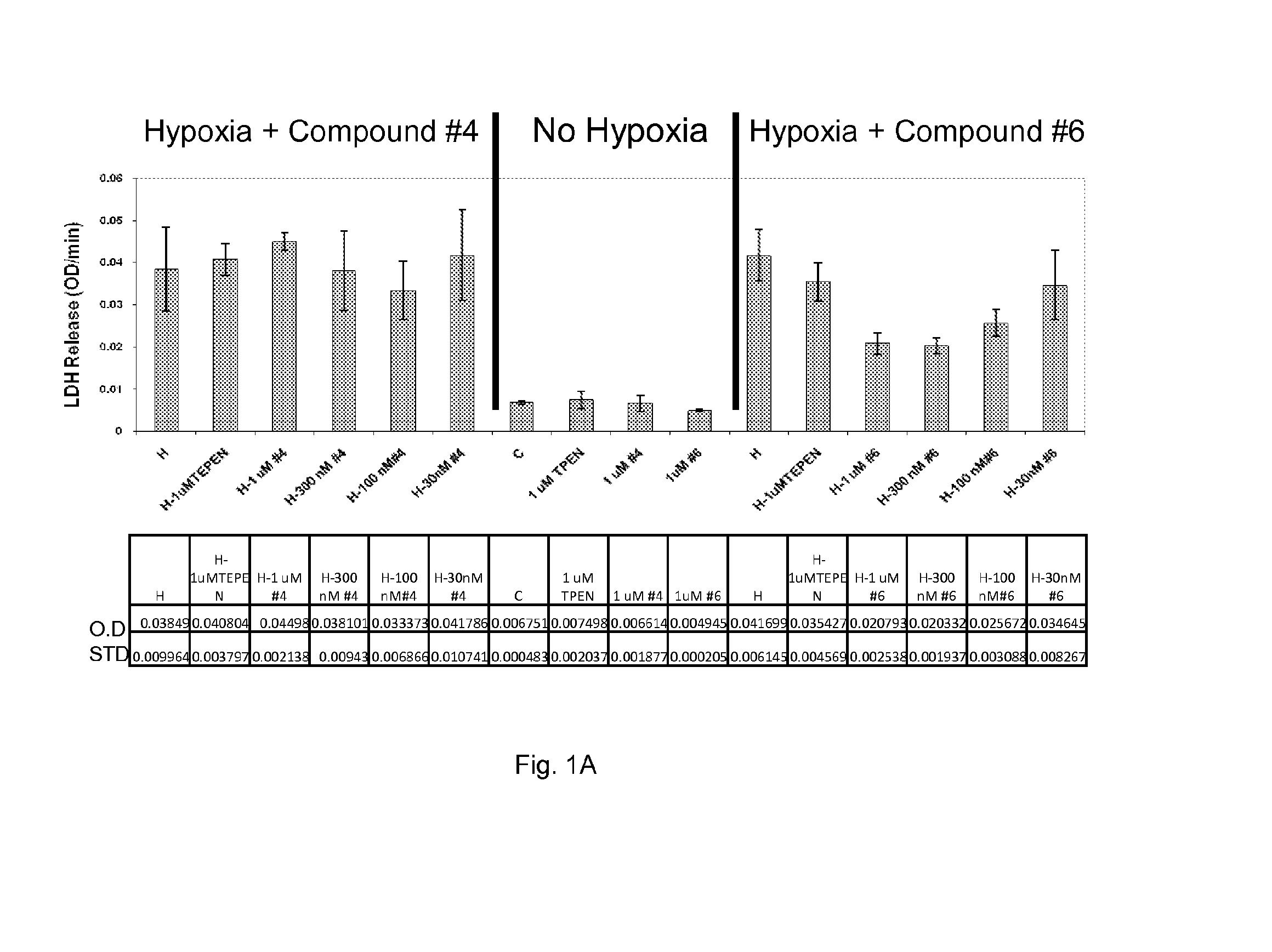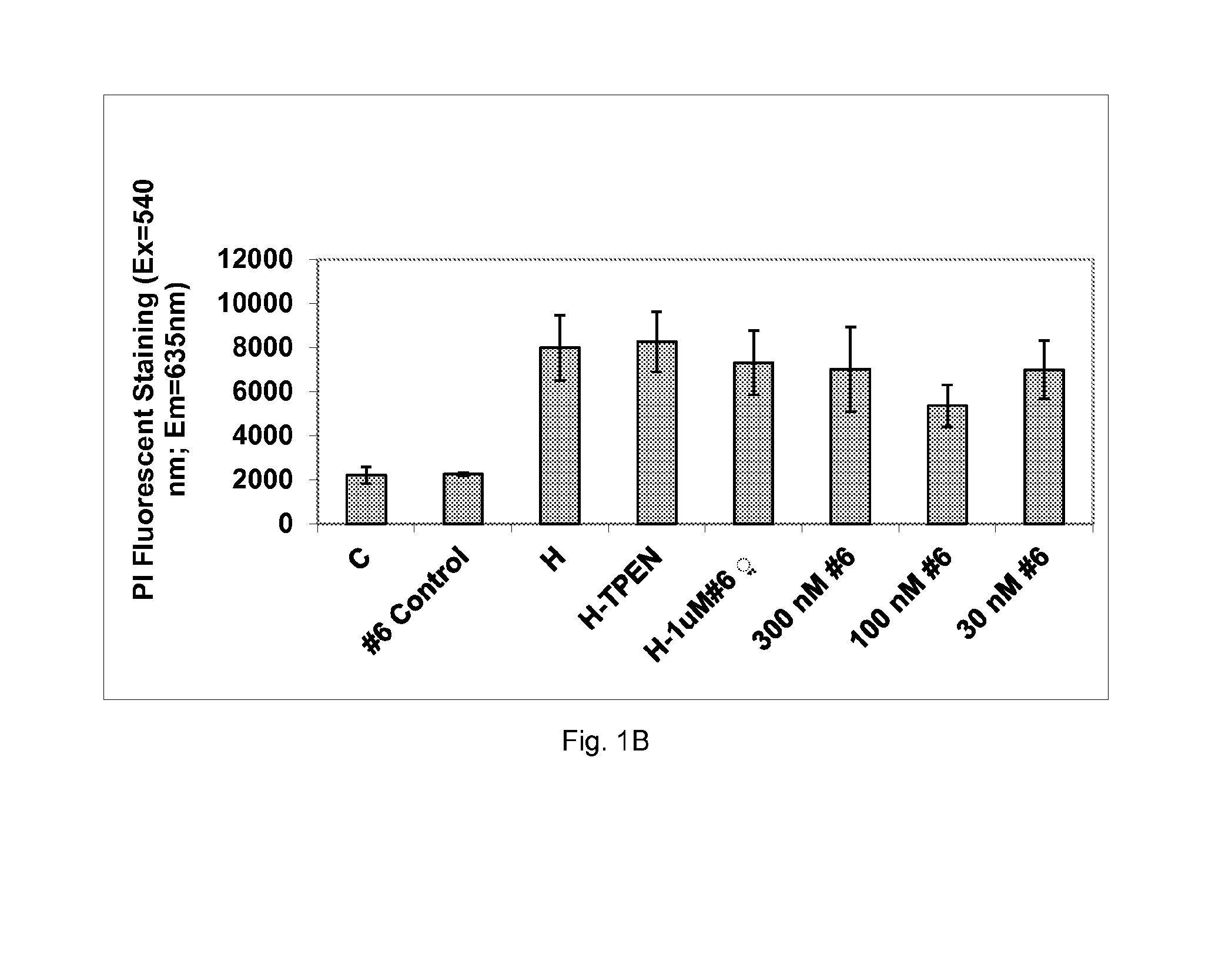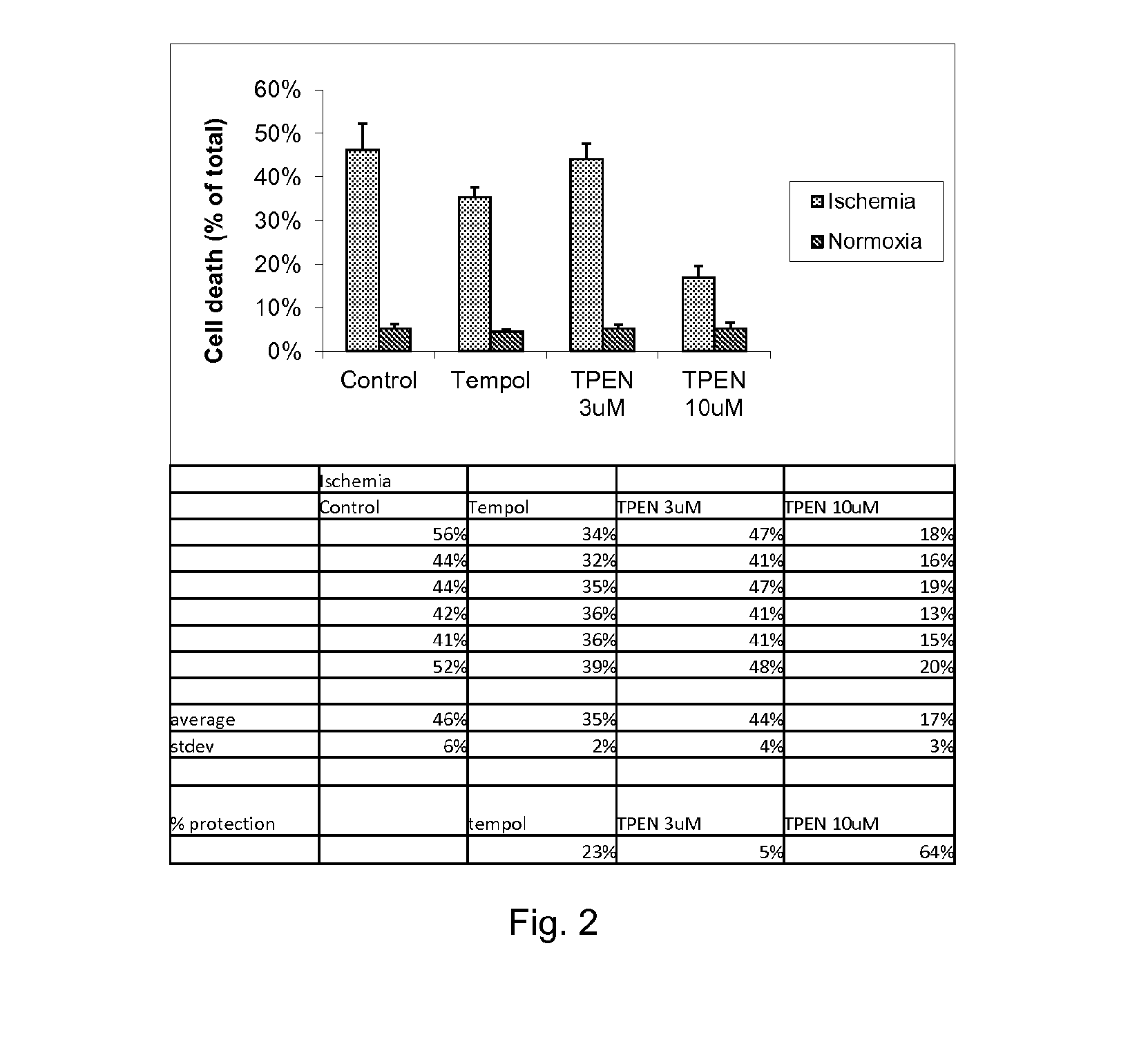Tetra-pyridine compounds and composition for protecting cells, tissues and organs against ischemia-reperfusion injury
- Summary
- Abstract
- Description
- Claims
- Application Information
AI Technical Summary
Benefits of technology
Problems solved by technology
Method used
Image
Examples
example 1
Synthesis of Compounds #1, #2, #4 and #6
[0050]
[0051]To a solution of 2-thiomethyl aldehyde (1.00 g, 6.57 mmol, 2.0 equiv), and ethylenediamine (0.22 mL, 3.30 mmol, 1 equiv) in ethanol (15.0 mL) was added titanium isopropoxide (1.96 mL, 6.34 mmol, 2.0 equiv). The solution was cooled to 0° C., and sodium borohydride (292 mg, 7.71 mmol, 2.3 equiv) added. After 2 h, the excess sodium borohydride was quenched with 0.5 M HCl (40 mL), and the solution partitioned with ethyl acetate. The organic layer was collected and the aqueous layer taken to pH>9 with 1M NaOH. The aqueous phase was then extracted with ethyl acetate (3×20 mL). The combined organic layers were dried (Na-2SO4), filtered, and concentrated under reduced pressure. The residue was purified via column chromatography (eluent: 30% CMA in dichloromethane, CMA=80:18:2 mixture of chloroform:methanol:ammonium hydroxide) to obtain the diamine (566 mg, 52%) as a yellow oil.
[0052]NMR: (D2O, 400 MHz) δ 7.34 (d, 1H, J=7.2), 7.11-7.26 (m, ...
example 2
In Vitro Evaluation of the Potential Protective Effect of Compounds 4 and 6 Against Ischemic Insult in Neonate Rat Cardiomyocytes Cells Compared to N,N,N′,N′-tetrakis-(2-pyridylmethyl)-ethylenediamine (TPEN)
In Vitro Protocol
Preparation of Rat Heart Cell Cultures
[0064]Rat hearts (1-2 days old) were sterilely removed and bathed three times in Ca2+- and Mg2+-free PBS to remove excess blood cells. The hearts were minced to small fragments and then agitated in a proteolytic enzyme-RDB solution prepared from a fig tree extract as described previously (Brik et al., 1990; Shneyvays et al., 2001). The RDB was diluted 1:200 in PBS at 25° C. for a few cycles of 10 min each. The supernatant suspension containing dissociated cells, to which medium containing 10% horse serum was added, was centrifuged at 500 g for 5 min. After centrifugation, the supernatant phase was discarded, and cells were resuspended in Dulbecco's modified Eagle medium supplemented with 10% heat-inactivated horse serum and ...
example 3
In Vitro Evaluation of the Potential Protective Effect of Compounds 4 and 6 Against Ischemic Insult in PC12 Cells Compared to TPEN and TEMPOL
In Vitro Protocol
Preparation of PC12 Cells Cultures.
[0072]PC12 cells were grown in 25 cm2 flasks in Dulbecco's modified Eagles Medium (DMEM), supplemented with 7% fetal bovine serum (FBS), 7% horse serum, 10,000 U / ml penicillin and 100 μg / ml streptomycin. Cells were grown in humidified incubator 5% CO2, 95% air at 37° C. The medium was replaced every 2 days, and upon 70% confluence, the cells were counted and seeded for the ischemia experiments.
[0073]All cell growth, medium replacements and additions of compounds were carried out in a clean room according to ISO7 requirements (10,000 particles / m2).
Hypoxia Induction
[0074]Approximately 1×106 PC12 cells / well were cultured and exposed to ischemia (oxygen and glucose deprivation=OGD) for 4.5 hr. Prior to the exposure, the growth medium was replaced with glucose-free DMEM (1 ml / well). Ischemia was pe...
PUM
| Property | Measurement | Unit |
|---|---|---|
| Chemical formula | aaaaa | aaaaa |
Abstract
Description
Claims
Application Information
 Login to View More
Login to View More - R&D
- Intellectual Property
- Life Sciences
- Materials
- Tech Scout
- Unparalleled Data Quality
- Higher Quality Content
- 60% Fewer Hallucinations
Browse by: Latest US Patents, China's latest patents, Technical Efficacy Thesaurus, Application Domain, Technology Topic, Popular Technical Reports.
© 2025 PatSnap. All rights reserved.Legal|Privacy policy|Modern Slavery Act Transparency Statement|Sitemap|About US| Contact US: help@patsnap.com



